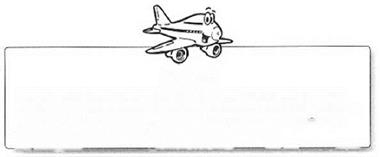Harriet Quimby
Harriet Quimby was one of the early thrill pilots—and one of the first to“buy the farm.” The Manhattan secretary and former drama critic with beauty-queen looks was the first woman to earn an American pilot’s certificate, and she hoped to win world fame with it. She figured that she could quickly make a name for herself if she was the first woman to fly across the English Channel. In April 1912, she did just that, departing from Dover and landing safely on the Normandy coast. But unfortunately for her, the historic flight was pushed out of the headlines for a slightly bigger story: The “unsinkable’Tifarac had gone to the bottom of the icy North Atlantic the previous night.
|
Plane Talk Early pilots were not only cheating death, they were defying science. At the time, scientists thought that flying over 60 miles per hour would be deadly because the wind would be so strong it would suck the air right out of a pilot’s lungs. —" ■… і —.і. . ■■■-. •.— …. .——————————– _1 ■ .—_■ -1 |

Undeterred, Quimby sailed back to the United States with plans to make real headlines. She entered the Boston-Harvard air meet, where she intended to set a speed record. Just before her attempt, she took her Bleriot two-seater up for a warm-up flight, carrying a passenger along for the ride. When she had flown out over Boston Harbor, spectators on the ground saw the plane make a sudden dip and saw the passenger fall from the plane and plunge hundreds of feet into the water. Harriet managed to recover control, but a few moments later, the plane again dipped, this time tossing Harriet to her death.
Plane Talk
Boston and other areas in the Northeast were a center of flying enthusiasm in the early days of aviation, probably because the Hub was home to some of the brightest engineering minds in the country. Over the years, however, better weather elsewhere, particularly in the South and Southwest, spread flying fever throughout the nation.
————– ——- ————— mm————————– . I…—————————————————————————————————————————————— ———- ——————————— ————- ■ – ■ ■—— 1————
Lincoln Beachey
Lincoln Beachey was another daring young pilot who didn’t survive to be a daring old one. Beachey was the first, and perhaps greatest, pilot of the “flying circuses,” as people called the barnstorming shows that traveled across the country. Beachey helped define the daring art form by creating some of its best-loved stunts. He was the first to loop an airplane by flying in a vertical circle. He was the first to fly upside down. He even flew “under” Niagara Falls by plunging down over the brink of the
American River and into the mist before reappearing near the water’s surface below. And Beachey created his signature “dip of death”—a stunt that was eventually to be the death of him.
In 1915, while performing an air circus act in his hometown of San Francisco, something went wrong during the “dip of death,” in which Beachey rocketed toward the ground at terrifying speed, then pulled up at the last moment. The stunt was a heartstopper, and it was known to make spectators faint in fear.
During his last stunt, though, his speed, which usually approached a then-blistering 90 m. p.h., got out of control at 103 m. p.h. Before he neared the ground where he could level off, the wings of his airplane crumpled, and he crashed.
|
Plane Talk Stunt flying continue! to take its toll today, sometimes even in Hollywood. One of the most famous movie mishaps took the life of legendary stunt flyer Art “The Professor’ Scholl, a disciplined flyer with an engineer1 s mind who flew hit stunt routines with his little dog Aileron as copilot. While flying a dangerous inverted flat spin during the filming of the movie Top Cun, something went wrong that no one yet understands. The stunt, though dangerous, was one that Scholl knew well and had performed safely hundreds of times before. On his final flight though, Scholl didn’t recover from the spin, and radioed his ground crew, Tvc got a problem.’ A few seconds later, he radioed again for the last time: Tve really got a problem.’ |













